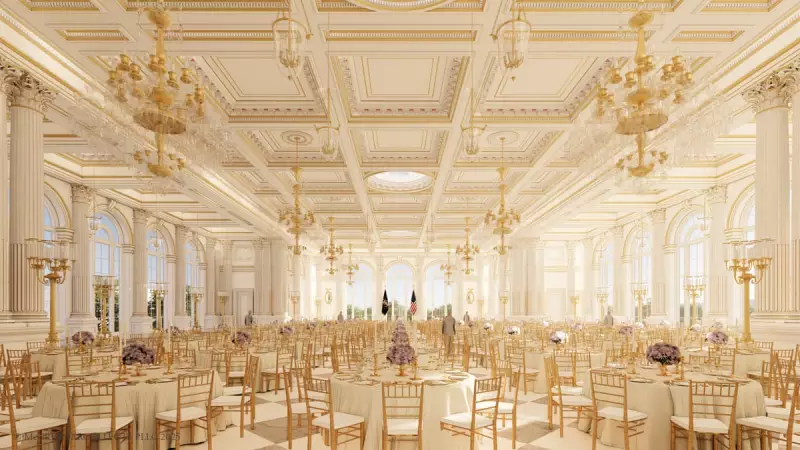
Architecture and design experts are sounding alarms over Donald Trump's controversial transformation of the White House's East Room, with leading critics branding the lavish makeover as 'dictator bling' that threatens democratic traditions.
The Grandiose Makeover
The recently unveiled ballroom redesign features dramatically amplified gold elements, crystal chandeliers of unprecedented scale, and opulent furnishings that critics argue cross the line from presidential elegance to outright ostentation. The Guardian's architecture columnist describes the aesthetic as 'authoritarian kitsch' reminiscent of strongman regimes rather than democratic leadership.
Expert Criticism Mounts
Prominent architectural historians have joined the chorus of disapproval, noting that the redesign represents a fundamental break with White House tradition. Where previous administrations maintained a balance between grandeur and accessibility, Trump's vision leans heavily toward what experts call 'power projection' through interior design.
'This isn't just a matter of taste,' one critic noted. 'The deliberate choice to emulate architectural styles associated with autocratic regimes sends a clear political message about the occupant's view of presidential power.'
Historical Context and Democratic Norms
The controversy touches on deeper questions about how political power expresses itself through built environments. Architectural scholars point out that democratic leaders have traditionally favoured designs that balance authority with approachability, while autocrats often use overwhelming scale and luxury to intimidate and impress.
The White House has historically represented American democratic ideals through its architecture. Critics argue that Trump's redesign moves away from these principles toward something more aligned with personal aggrandisement than national representation.
Public and Professional Reaction
The design community's response has been overwhelmingly negative, with many professionals expressing concern about the normalisation of what they describe as 'authoritarian aesthetics' in democratic spaces. Social media reactions have been equally critical, with the '#DictatorBling' hashtag gaining traction among design enthusiasts and political commentators alike.
As one architecture professor put it: 'When the people's house starts looking like a dictator's palace, we should all be asking what that says about the direction of our democracy.'





